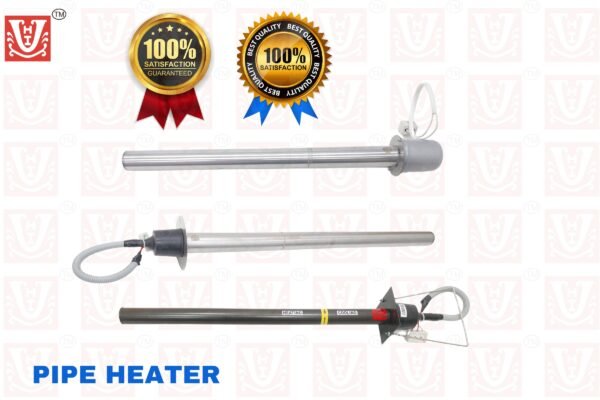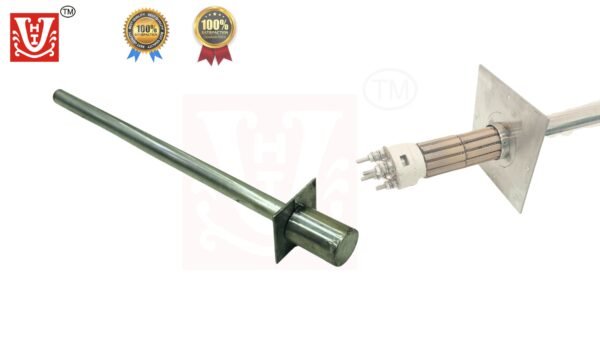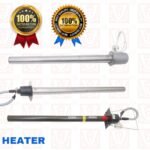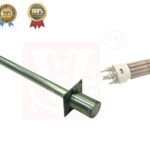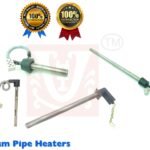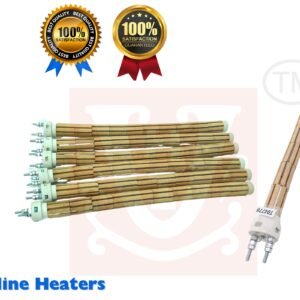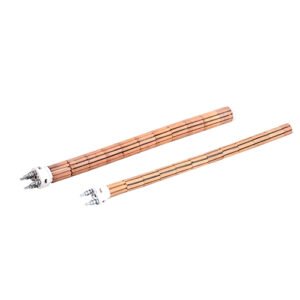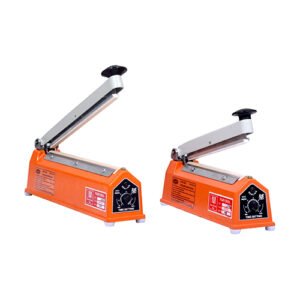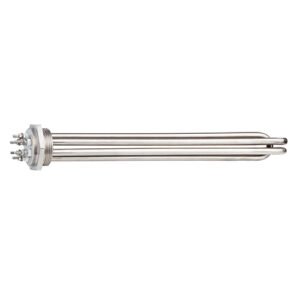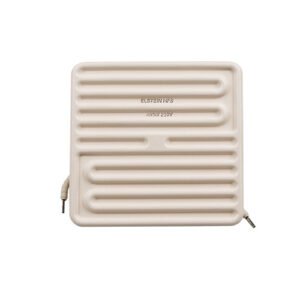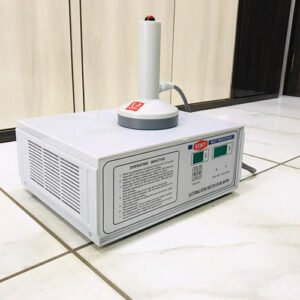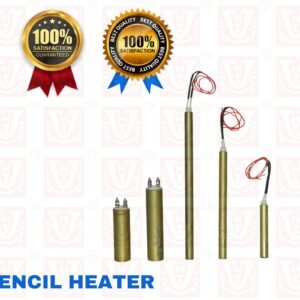Pipe Heater
A Pipe Immersion Heater is an industrial heating element designed for direct immersion in liquids such as water, oil, and chemicals. It provides efficient and uniform heat transfer, making it ideal for industrial applications such as chemical processing, oil heating, and water heating. Available in threaded or flanged mounting options, these heaters offer high durability, fast heating, and customizable configurations for various industrial needs.
- Description
Description
Overview
A Pipe Immersion Heater is an industrial heating element designed for direct immersion in liquids such as water, oil, and chemicals. These heaters provide efficient and uniform heat transfer, making them ideal for industrial and commercial applications.
Key Features
-
Robust Construction – Made from high-quality stainless steel, Incoloy, or other corrosion-resistant materials.
-
Efficient Heating – Ensures rapid and even heat distribution.
-
Customizable Design – Available in various sizes, wattages, and voltage ratings.
-
Safety Features – Equipped with thermostats, thermal cut-offs, and explosion-proof options for hazardous environments.
-
Easy Installation – Threaded or flanged connections for secure mounting.
Applications
-
Chemical Processing – Heating of acids, alkaline solutions, and solvents.
-
Oil & Gas Industry – Used in fuel and lubricant heating.
-
Water Heating – Boilers, storage tanks, and industrial baths.
-
Food & Beverage – Heating edible oils, dairy, and other food-grade liquids.
-
Pharmaceuticals – Used in controlled heating of chemical formulations.
Technical Specifications
-
Voltage: 230V / 415V / Custom
-
Power Range: 1 kW to 6 kW
-
Material: Stainless Steel, Titanium,
-
Mounting: Screw Plug / Flange / Custom Design
-
Temperature Range: Up to 90°C (varies by material)
-
Control Options: Thermostats, Digital Controllers, RTDs, and Thermocouples
Why Choose Us?
-
High-quality and durable products
-
Customization options available
-
Competitive pricing
-
Reliable after-sales support
ADVANTAGES
- Built in insulation minimizes unwanted change in temperature along the barrel
- Heat transfers through radiation, conduction, and convection, so a perfect fit is not required compared to other band heaters
- Heat transfers are not affected by irregular surfaces or a loose fit
- Because they operate at higher watt densities, they can be used in wider increments
- The number of bands used can be reduced with simplified wiring
- The heater is safer with the cooler external surface – over other band heaters
- The flexible design allows easy install and removal
APPLICATION
- Injection Molding Machine
- Blow Molding Machine
- Extrusion Line
| Parameter | Specification |
|---|---|
| Voltage Rating | 230V / 415V / Custom |
| Power Rating | 1 kW – 6 kW |
| Heating Element Material | Stainless Steel (SS304 / SS316), Titanium, |
| Sheath Material | Stainless Steel, Incoloy, or as per application |
| Mounting Type | Screw Plug / Flanged / Welded |
| Threaded Connection | ½”, ¾”, 1″, 1.5″, 2″ BSP / NPT (Custom sizes available) |
| Flange Size | 2″ to 24″ (Customizable) |
| Temperature Range | Up to 90°C (Depending on sheath material) |
| Heating Medium | Water, Oil, Chemicals, Gases |
| Control Options | Thermostat, RTD Sensor, Thermocouple, Digital Controller |
| Safety Features | Thermal Cut-off, Explosion-proof (optional) |
| Insulation | Magnesium Oxide (MgO) for high thermal efficiency |
| Lead Terminals | Nickel-plated / Stainless Steel |
| Ingress Protection | IP55 / IP65 / IP67 / IP68 (as per requirement) |
Customization Options:
-
Specific wattage and voltage requirements
-
Custom sheath materials for corrosive environments
-
Integrated control panels for precise temperature regulation
-
Hazardous area (Flameproof) certified designs

ORDERING INFORMATION
-
To place an order for a Pipe Immersion Heater, please provide the following details to ensure the right product selection:
1. Electrical Specifications
-
Voltage Rating (230V / 415V / Custom)
-
Power Rating (Specify in kW)
2. Heater Specifications
-
Sheath Material (SS304, SS316, Incoloy 800, Titanium, Copper, etc.)
-
Heating Medium (Water, Oil, Chemicals, Air, etc.)
-
Mounting Type (Threaded / Flanged / Welded)
-
Thread or Flange Size (BSP / NPT / ANSI / Custom)
-
Required Temperature Range
3. Control & Safety Features
-
Thermostat or Digital Temperature Controller
-
Thermocouple / RTD Sensor Requirement
4. Quantity & Delivery
-
Number of Units Required
-
Preferred Delivery Timeline
-
Shipping Location
-
-
Installation Instructions
-
Pre-Installation Check:
-
Verify the heater’s specifications (voltage, wattage, and material) against your application requirements.
-
Ensure the power supply matches the heater’s rating.
-
Inspect the heater for any physical damage before installation.
-
-
Mounting the Heater:
-
For threaded models, securely screw the heater into the tank fitting (BSP/NPT thread).
-
For flanged models, align and bolt the heater onto the tank flange, ensuring a proper gasket is used to prevent leaks.
-
Ensure the heater is fully submerged in the liquid before turning it on to prevent dry firing.
-
-
Electrical Connections:
-
Connect the heater to a properly rated power supply using appropriate wiring.
-
Ensure proper grounding to prevent electrical hazards.
-
Use a thermostat or temperature controller for precise temperature regulation.
-
-
Safety Checks Before Operation:
-
Double-check all wiring connections.
-
Verify that the heater is fully immersed in the medium.
-
Ensure that over-temperature protection devices (thermal cutoffs, thermostats) are installed and functional.
-
Turn on the heater and monitor for stable operation.
-
Maintenance Guidelines
-
Regular Inspections:
-
Periodically check for any physical damage, corrosion, or scaling on the heater surface.
-
Inspect electrical connections for loose or damaged wires.
-
-
Cleaning the Heater:
-
If scale buildup is observed, clean the heater using appropriate descaling chemicals or mechanical cleaning methods.
-
For oil applications, clean residues with a non-flammable solvent.
-
-
Checking Temperature Controls:
-
Ensure that thermostats and controllers are calibrated correctly.
-
Test safety devices, including thermal cutoffs and limit switches, to prevent overheating.
-
-
Preventing Dry Firing:
-
Always ensure the heater is submerged before turning it on.
-
Use liquid level sensors to prevent operation in dry conditions.
-
-
Replacement & Repairs:
-
If the heater shows excessive wear or damage, replace it immediately.
-
Use only manufacturer-approved spare parts for repairs.
-
-

